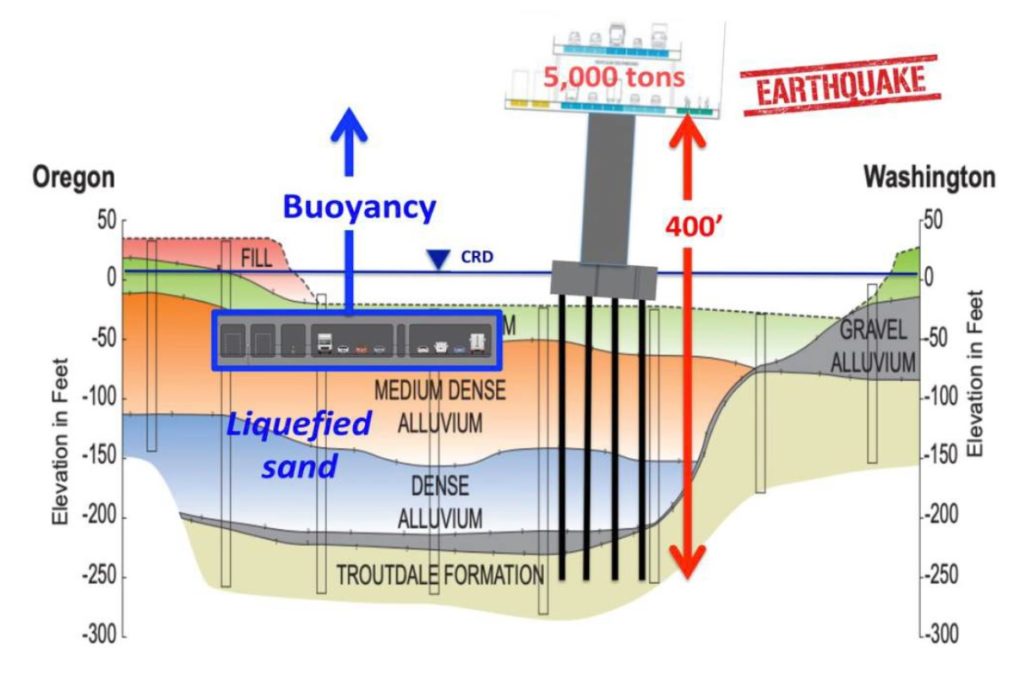As we’ve said before, our Alliance is NOT endorsing any particular alternative to the Locally Preferred Alternative (LPA). But we emphasize that it’s vitally important the decision makers have the choice of multiple alternatives, and in particular the need for one or more alternatives that can be built out in phases. Today we’re giving some exposure to an interesting technology: immersed tube tunnels.
Immersed Tube Tunnels are built in pieces on land, then floated out into the river and placed in a trench dredged in the river bottom. Here’s a promotional video about one such project in Virginia (which incidentally was completed a year ahead of schedule) that shows the process in some detail:
In the case of the Interstate Bridge Replacement, this technology is interesting for a few reasons:
- Going under the shipping channel (17 feet at the bridge) requires much lower grades than going over it (at least 116 feet of clearance and 35 feet of structure).
- It avoids massive structures visually impacting Hayden Island and the Vancouver waterfront and downtown.
- Tunnel segments have neutral buoyancy, so when the subduction zone earthquake hits and the river bottom liquifies, the tunnel will float on top of the liquified soil. Contrast this to the massive structures that will have to be anchored in bedrock to hold the high bridge over a hundred feet in the air!

During the original Columbia River Crossing project several tunnel options were studied, but these were bored tunnels that would have gone underneath Hayden Island. In contrast, the immersed tube option suggested by Mr. Bob Ortblad would connect from the north shore of Hayden Island to Vancouver. Mr. Ortblad is a retired civil engineer who for many years taught The History of Infrastructure at the University of Washington.
The IBR project says they have analyzed Mr. Ortblad’s proposal, and it’s not workable. Mr. Ortblad vehemently dismisses their analysis, pointing out that what they analyzed differed in significant ways from what he proposed. We’ll let you read Mr. Ortblad’s testimony to the Bi-state Legislative Committee.